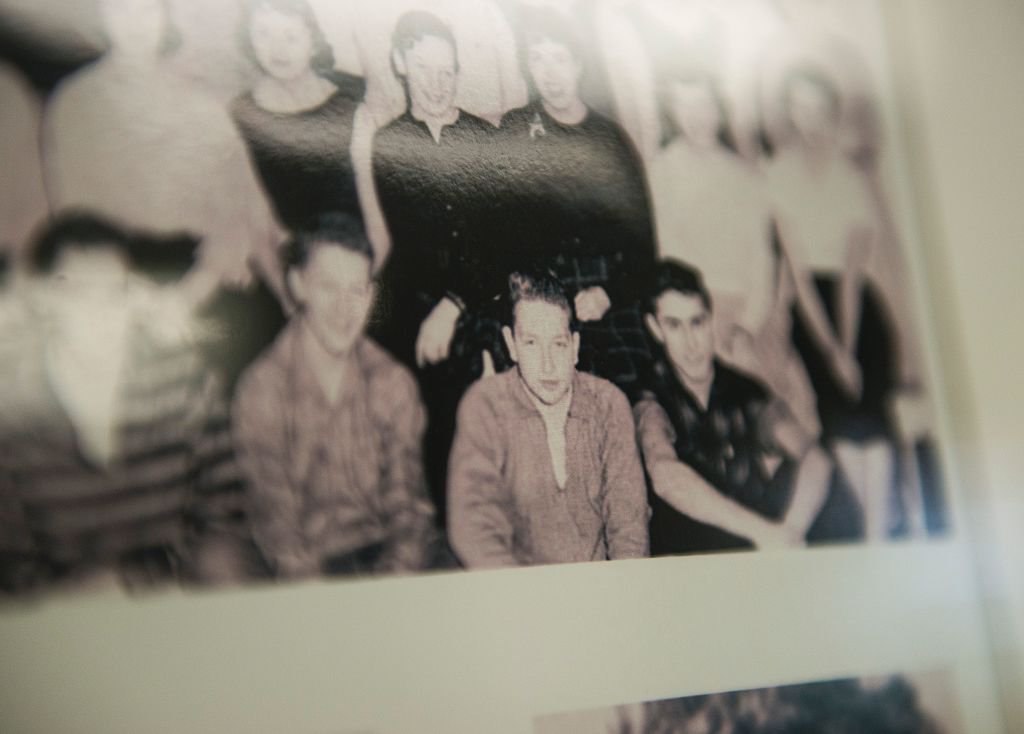Hibbing, Minnesota, rises from the Mesabi Iron Range, a mining town built on—and from—rich iron ore. Some 75 miles northwest of Duluth, only 90 miles from the Canadian border, Hibbing is home to the world’s largest open-pit iron mine, known as the Hull-Rust-Mahoning, and, in the early 1960s, its ore informed the folk songs of a young Jewish musician named Robert Zimmerman.
Born in Duluth on May 24, 1941, and raised in Hibbing, Zimmerman became obsessed with folk music: vernacular sounds, mother tongues, the music of the people. In September 1959, he left Hibbing for Minneapolis, and upon arriving, quickly changed his name to Bob Dylan. Less than two years later, in January 1961, at age 19, Dylan left Minnesota altogether and hitchhiked to New York City searching for Woody Guthrie—the Dust Bowl songwriter who inspired him to play folk music.
A photo of a young Bob Dylan (center) was on display in an exhibition at the Hibbing Public Library in Hibbing, Minnesota in October 2016. Stephen Maturen/AFP via Getty Images
Dylan found Guthrie, only not in New York but at Greystone Park Psychiatric Hospital in Morris Plains, New Jersey, where he was being treated for Huntington’s disease. The young musician visited Guthrie’s bedside and played him songs. But Dylan wasn’t solely seeking his idol’s company. He was also chasing fame. So he pitched camp in Greenwich Village, the heart of bohemia, where Guthrie himself once lived, and began playing local coffeehouses. It was the dead of winter, a biting world; worse still, the city’s promoters and talent scouts and record labels kept freezing him out. But Dylan struggled on—he believed, so he says, that fate had called him to New York City. “I’d come from a long ways off and had started a long ways down,” he wrote in his 2004 memoir, Chronicles: Volume One. “But now destiny was about to manifest itself. I felt like it was looking right at me and nobody else.”
Only ten months later, on October 26, 1961, John Hammond, the A&R man who discovered Billie Holiday, Benny Goodman and Count Basie, signed Bob Dylan, then 20, to Columbia Records. “I…
Click Here to Read the Full Original Article at Travel | smithsonianmag.com…
